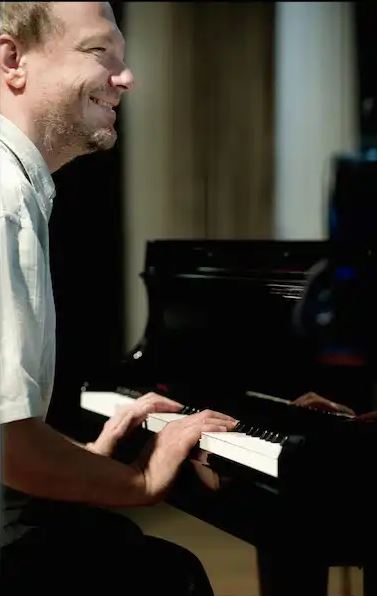BEAUTIFULLY SUSPENDING LISZT AND DEBUSSY FROM MARC-ANDRE HAMELIN
Marc-André Hamelin, piano: Works by Liszt, Debussy, Godowsky and Feinberg, Chan Centre, March 4, 2018.
Canadian pianist Marc-André Hamelin is, in many respects, one of the marvels of the 21st century. There are simply few living pianists that can match his transparency of articulation, rhythmic and tonal control, and his staggering virtuoso strength. These characteristics have been widely illustrated in his performances and recordings of 19th and 20th century repertoire, not least in the more obscure composers he has pioneered from the beginning of his career. This concert yielded yet another example of the artist’s exalted pianism, nicely mixing shorter virtuoso works with the more serene postures of Liszt’s ‘Bénédiction de Dieu dans la solitude’ and Debussy’s Images Book One, and adding the little discovery, Samuil Feinberg’s Fourth Piano Sonata. While audiences are always awed by Hamelin’s ability to dispatch ultra-demanding virtuoso pieces with consummate ease, I actually felt I learned a little more about the pianist’s subtle quest to find the tonal balance, shading and motion that distill the essence of each work. This was his first appearance for the Vancouver Recital Society since 2012.
One thing that always impresses about Hamelin’s playing is that both his hands are so balanced and uniform in address and weight that it is almost as if any given note would register identically no matter which hand was playing it. With little apparent sense of human tug, pull or idiosyncrasy in the delivery, the playing frequently achieves a rare type of objective accuracy, almost ‘untouched by human hands’. What made the treatment of Liszt’s ‘Bénédiction’ particularly compelling was the subtle Lisztian flow that Hamelin placed on top of this foundation. The sense of natural unfolding gave one a real sense of visionary journey, exploiting beautifully-refined sensual hues at many points, but never forgetting the reaches of the composer’s underworld either. The softer playing was wonderfully suspended and the almost gossamer-like right hand delivery towards the close was a thing of remarkable beauty.
Refined sentient hues and a natural pliability of texture also informed the interpretation of Debussy’s Images Book I. Even thinking back to Michelangeli and others, it would be difficult to think of a more accurate, yet subtly revealing distillation of Reflets dans l’eau. The following two movements were hardly less fine: the telling suspended shadings in Hommage à Rameau, capped off by beguiling precision and rhythmic certainty in Mouvement. Throughout both the Liszt and Debussy, I thought Hamelin evinced a more exact poetic identification with the spirit of these composers than previously.
The more extrovert pieces brought forth Hamelin’s characteristic clarity, rhythmic acuity and unrivalled command. It was good to hear the less familiar Hungarian Rhapsody No. 13 for a change, and one probably would have never thought that Liszt’s blockbuster Fantasy and Fugue could summon such elemental, granitic chords. I would likely not turn to Godowsky’s Symphonic Metamorphosis of Wine, Women and Song very frequently, but the rubato and fragrance in Hamelin’s treatment of this demanding work captured its Viennese imagery well, and I was intrigued by the moments where a more chaotic, macabre dimension snuck into the waltz sequences, akin to Ravel’s La Valse.
Modern Russian composer Samuil Feinberg (1892-1960) is the pianist’s latest discovery in his line of long-neglected composers that should be heard. He presented the composer’s first two piano sonatas at Wigmore Hall in 2016; here it was the short (9 minute) Piano Sonata No. 4 (1918). This is a tightly-knit piece evolving with the rhapsodic impetuosity, twisting lines and burning flame that one often identifies with the composer’s compatriot, Alexander Scriabin. It has an undeniable compositional confidence and Hamelin is just the pianist to integrate all its complex passions seamlessly. Early on, I somehow felt a tinge of the bittersweet musing of Prokofiev’s Sonatas 6 – 8, which is indeed interesting since those sonatas were written over two decades later.
All told, a thoroughly satisfying exploration of varied repertoire with one of the true masters of the keyboard. The encore was Hamelin’s own scintillating composition:Toccata on ‘L'Homme armé’.
© Geoffrey Newman 2018

